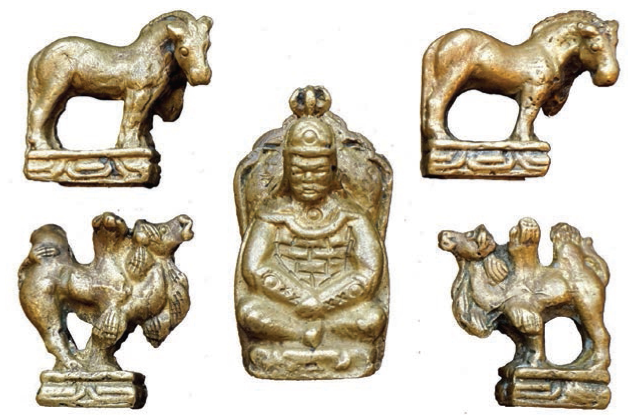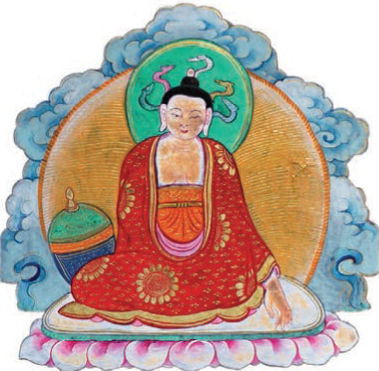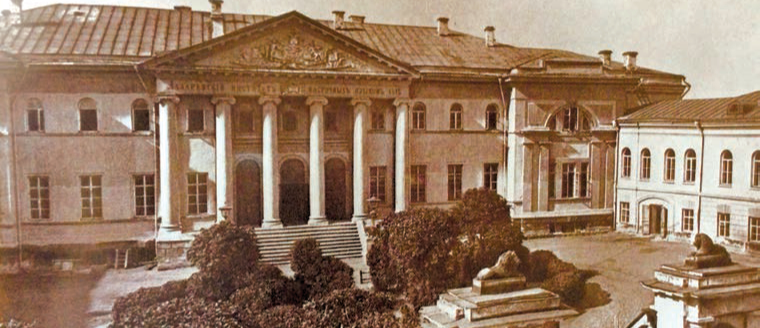Vol 1, No 2 (2018)
View or download the full issue
PDF (Russian)
HISTORY OF THE EAST. Universal history 
209-236 1077
Abstract
The article is a continuation of the author’s research on Mongolian chess from the mid 13th century published in Orientalistica 2018(1). It offers a description of the survived chess figures and dates them back to the reign of Hulagu Khan (1217-1265) or, more precisely to the time of his military campaign to the Middle East. The author argues that the chess were used for learning military tactics. The craftsmen who produced chess sets supplied the faces with the features of real kings. The Buddhist style of sculptures (chess figures) betrays that as a noen was presented Ogedei Khan (1186-1241), the monarch who built the capital of the Mongol Empire, Karakorum (Kharkhorin) in the valley of the Orkhon River.
194-208 962
Abstract
The article deals with the analysis of how the Jesuit reports sent from China influenced the theories common during the Enlightenment with regard to this part of the world. The chronological period starts with the time of M. Montaigne and ends with the time of A. Smith.
HISTORY OF THE EAST. Historiography, source critical studies, historical research methods 
145-176 871
Abstract
The modern Indian studies hold the tantric systems for the most complicated one among other research topics. Their intrinsic structures are very complicated. They consist of texts with many layers, as well as commentaries and sadhana. They also record various yoga practices, which become complicated with each next generation, various mythological texts, indications on mandala construction, rules of recitation, etc. This complexity in order to be adequately understood they require attention of many specialists, not only specialists in text studies but also specialists in Buddhist studies, psychologists, etc. The present article is a continuation of the article published in the first volume of Orientalistica. It offers new approaches to the study of the so called “Diamond Vehicle” the system of the "Guhyasamäja Tantra” (“Esoteric Community Tantra”). It had been compiled in India for over seven centuries. In course of its compilation it had several versions of transmission, commenting and practical use.
237-250 399
Abstract
The article deals with rare and little-known money substitutes, i.e. coin-like uniface bronze and brass payment tokens issued by the so-called Dayhan (Peasants') Counting Room of Murghab Regal Estate, once the property of Tzar Alexander II (in Bayram Ali, nowadays in Mary Velayat, Turkmenistan). The article provides a survey of the information accessible, as well as an attempt of its attribution and dating. The Appendix comprises a type catalogue, which lists all kinds of the described metallic counting units (tokens) known to date.
HISTORY OF THE EAST. Archaeology 
177-193 542
Abstract
The article is devoted to the works of Soviet and Russian archeologists and orientalists in the Republic of Yemen, which started in 1983 and was interrupted by the civil war in 2014. The main research was focused on the identification and study of historical monuments of Yemen from the Paleolithic to the Middle Ages, and also on the study of local linguistic dialects and folklore. A significant part of the work was the investigations of the ancient Hadrami port-city of Qana’, ancient settlements in the Raybun Oasis and settlement Sabir near Aden, which made it possible to establish the characteristics of the material and intellectual life of the population of ancient South Arabia, as well as to identify trade relations with the neighboring and long-distance regions of the Mediterranean, the Arab-Persian Gulf and the Indian Ocean.
HISTORY OF THE EAST. Philosophy of Religion and Religious Studies 
275-286 998
Abstract
The renowned book by the late Rev. Men' has recently been published again. This work deals with the origins of the Religions of the East, in the first instance the Buddhism. The Publisher has left the text without any comments, which would make the views of the Reverend more distinct. The present article is an attempt to fill in this gap. One has to say that the views of the Russian Orthodox priest regarding this phenomenon are far from being neutral. Some of his postulates invite negative comments of the specialists. However, his subjective approach provides a learned reader with a clear view on the common as well as distinctive features as applied to these world religions especially with regard to the technical terms used and description of the world order. In particular these are the metempsychosis (or re-incarnation) as seen by a modern Western reader and by a practicing Buddhist.
HISTORY OF SCIENCE. Oriental Studies 
305-350 889
Abstract
The present article was authored by the Russian Orientalist historian Ashot P. Baziyants (1919-1999) back in 1993 to mark the 175 anniversary of the Institute of Oriental studies. Dr Baziyants, a professional historian and a senior research fellow at the Institute relied in his research on archival material from the Asiatic Museum, as well as from Central Archival Depositories, such as the Russian State Archive of Ancient Documents, Central State Archives of the Cities of Moscow and St Petersburg, the Russian State History Archive and many others. The documents newly discovered by Dr Baziyants reflect various activities of one of the oldest Russian Academic Institutions, which was founded in St Petersburg in 1818. By 1900 the Institute was already a major research centre. Its activities were focused upon the history, culture, language and religion of the countries of the East. In the 20th cent. the staff and research fellows of the Institute significantly contributed to the theory of the Russian Orientalist research. Their research became internationally known and many books and research papers originally written in Russian were subsequently translated into other languages of the world. Dr Baziyants suggested three periods in the last two centenaries, which allowed him to better identify the activities and research priorities of the Institute of Oriental Studies: 1818-1829, 1939-1949, 1950-present. Within this framework he has placed the most significant results achieved by the Institute as well as the Institute research policy laid down by its directors and research fellows members of the Russian Academy.
PHILOSOPHY OF THE EAST. Philosophy of religion and religious studies 
251-274 452
Abstract
The article comprises a translation into Russian of the first chapter from the section on metaphysics / theology from the treatise al-Isharat wat-tanbihat (Remarks and Admonitions) by the most eminent Islamic philosopher Abu Ali b. Sina (Avicenna) (d. 1037 AD). This chapter comprises the Avicenna’s expression of his theological and philosophical teaching. In the books is offered Avicenna’s distinction between the essence and existence, the subdivision of the essence into the “possible” and “necessary”. The text also contains the Avicessa’s proof of the existence of God, which is called the proof of the veracious (burhan as-saddiqin).
LITERATURE OF THE EAST. Theory of literature. Textology 
289-302 406
Abstract
The paper deals with the key aspects of the early genesis of Vaishnava literature in West Bengal and the concept of the world order based on the aesthetic system, which was developed in the 15th cent. AD by Caitanya and his circle. There are also analyzed some aspects of the Rupa Gosvami’s oeuvre, especially the aesthetic principles expanded by him with regard to the Krishna doctrine, especially their representation in forms of drama based upon Caitanya's theology.
FROM THE EDITOR 
ISSN 2618-7043 (Print)
ISSN 2687-0738 (Online)
ISSN 2687-0738 (Online)


























